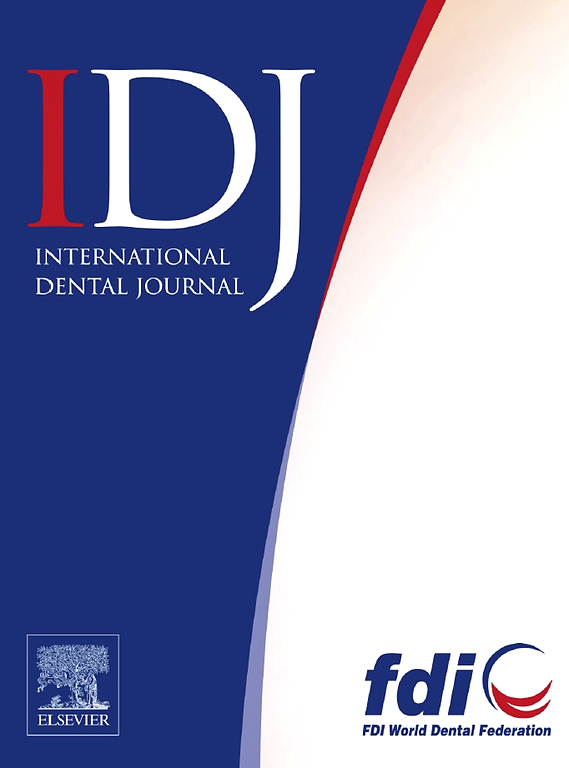扩展现实在正畸治疗计划和模拟中的作用-范围综述
IF 3.7
3区 医学
Q1 DENTISTRY, ORAL SURGERY & MEDICINE
引用次数: 0
摘要
扩展现实(XR)是虚拟现实(VR)、增强现实(AR)和混合现实(MR)的统称,已成为牙科和医学领域的一项突破性技术。然而,这些技术的范围、有效性和局限性仍然不清楚。目的本综述的目的是系统地概述XR在正畸治疗计划和模拟中的应用现状。方法在PubMed、Scopus、b谷歌Scholar、Web of Science、Embase、IEEE explore和Cochrane Library等广泛的电子数据库中对文献进行系统和全面的综述。包括在正畸临床或教育环境中使用XR的研究。数据提取侧重于XR类型、应用程序目的、目标人群、结果和局限性。研究选择遵循系统评价的首选报告项目和范围评价的元分析扩展(PRISMA-ScR)框架。结果共纳入19项研究,包括VR (n = 13)、AR (n = 5)和MR (n = 1)方法。确定的应用展示了广泛的实用性,从临床程序,如正畸治疗计划,精确支架放置和复杂的手术模拟,到教学和以患者为中心的用途,包括沉浸式学生培训和交互式患者教育。在这些不同的应用中,最常见的积极结果包括增强空间意识、临床准确性、学习者动机和减少患者焦虑。关键的是,目前的证据基础虽然很有希望,但主要受限于研究样本量小,方法学上的显著异质性阻碍了meta分析,以及缺乏可靠的长期临床结果数据。结论xr技术通过提高治疗准确性、临床培训和患者参与度,在改变正畸护理和教育方面具有重要的前景。然而,将其纳入常规实践将需要高质量、大规模的研究,以确定临床有效性、长期技能保留和成本效益。产生强有力的证据,包括患者报告的结果,对于弥合创新与基于证据的实施之间的差距至关重要。本文章由计算机程序翻译,如有差异,请以英文原文为准。
The Role of Extended Reality in Orthodontic Treatment Planning and Simulation-A scoping Review
Background
Extended reality (XR), a nomenclature covering virtual reality (VR), augmented reality (AR), and mixed reality (MR), has emerged as a breakthrough technology in dental and medical sciences. However, the scope, effectiveness, and limitations of these technologies still remain unclear.
Aim
The aim of the present scoping review is to systematically outline the current state of XR applications for orthodontic treatment planning and simulation.
Method
A systematic and comprehensive review of the literature was carried out in a broad array of electronic databases such as PubMed, Scopus, Google Scholar, Web of Science, Embase, IEEE Xplore, and the Cochrane Library. Studies involving the use of XR in orthodontic clinical or educational settings were included. Data extraction focused on the XR type, application purpose, target population, outcomes, and limitations. The study selection followed the Preferred Reporting Items for Systematic Reviews and Meta-Analyses extension for Scoping Reviews (PRISMA-ScR) framework.
Result
A total of 19 studies were included, including VR (n = 13), AR (n = 5), and MR (n = 1) approaches. The identified applications demonstrate broad utility, ranging from clinical procedures such as orthodontic treatment planning, precision bracket placement, and complex surgical simulation, to pedagogical and patient-centered uses including immersive student training and interactive patient education. The most frequently reported positive outcomes across these diverse applications include enhanced spatial awareness, clinical accuracy, learner motivation and reductions in patient anxiety. Critically, the current evidence base, while promising, is constrained by predominantly small sample sizes across studies, significant methodological heterogeneity hindering meta-analysis, and a paucity of robust, long-term clinical outcome data.
Conclusion
XR technologies hold significant promise for transforming orthodontic care and education by enhancing treatment accuracy, clinical training, and patient engagement. However, their integration into routine practice will require high-quality, large-scale studies that establish clinical effectiveness, long-term skill retention, and cost-efficiency. Generating robust evidence, including patient-reported outcomes, is essential to bridge the gap between innovation and evidence-based implementation.
求助全文
通过发布文献求助,成功后即可免费获取论文全文。
去求助
来源期刊

International dental journal
医学-牙科与口腔外科
CiteScore
4.80
自引率
6.10%
发文量
159
审稿时长
63 days
期刊介绍:
The International Dental Journal features peer-reviewed, scientific articles relevant to international oral health issues, as well as practical, informative articles aimed at clinicians.
 求助内容:
求助内容: 应助结果提醒方式:
应助结果提醒方式:


